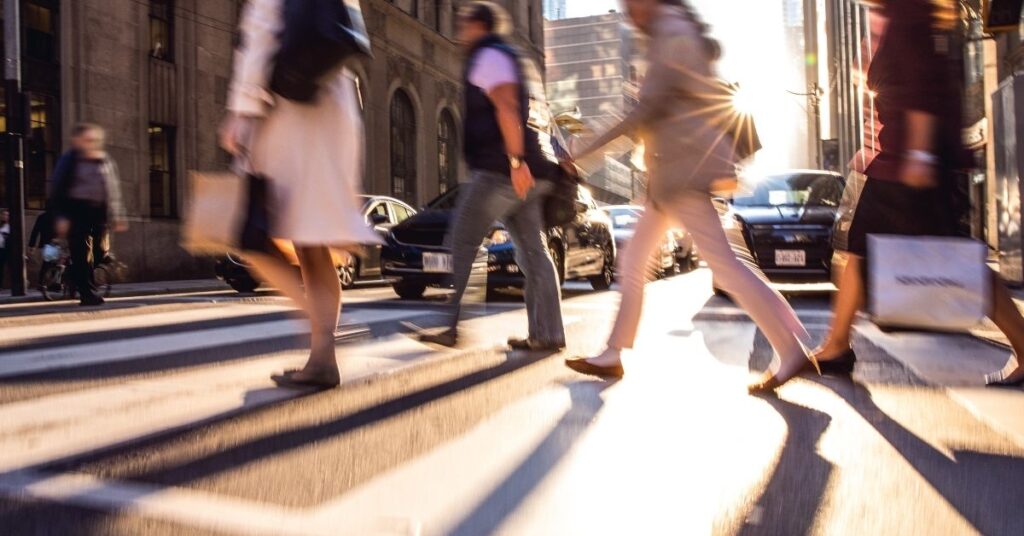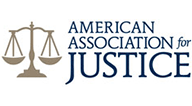Pedestrian accidents are all too common throughout California, and you may find yourself suffering the devastating consequences and needing to recover. The support of a qualified California personal injury attorney may be essential to crafting your case and ensuring that you have the best possible position to recover maximum compensation.
Sadly, pedestrians are some of the most vulnerable users of the road. Without the protections afforded by cars, such as the exterior of the vehicle, airbags, and seatbelts, pedestrians have the potential to suffer catastrophic or even fatal injuries. When vehicles and pedestrians collide, the results can be disastrous, and many cities throughout California are home to plenty of preventable pedestrian accidents. Knowing your rights as a pedestrian and recognizing when you need to reach out and contact a dedicated attorney can make a big difference in the outcome of your case and your ability to focus on your health and recovery.
Who Counts as a Pedestrian?
One of the most important things to consider with regard to pedestrian rights in California is who is technically considered a pedestrian. The law recognizes that a pedestrian is anyone who is not using a vehicle to get around in a public place. Vehicles can include mopeds, cars, trucks, e-scooters, bicycles, and motorcycles. Anyone who is walking, skateboarding, using a wheelchair for transportation, jogging, or using roller skates could be classified as a pedestrian in the eyes of California law.
While pedestrians are extremely vulnerable to being hurt in accidents, they are still responsible for obeying all laws that relate to them in California. When it comes to pedestrian safety, crosswalks are some of the most common places for accidents to occur because they involve very close proximity between pedestrians and vehicles. Although pedestrian safety should be top of mind for all drivers, you can’t always count on someone to pay attention or follow the law.
Right of Way Rules in Crosswalks: Understanding Pedestrian Safety
Pedestrians typically have the right-of-way at all crosswalks for California Vehicle Code Section 21950. Further, this law goes on to define rules for crosswalks. First, a driver must stop if a pedestrian is in their half of the lane or approaching quickly enough so as to be in danger of being struck. Second, all drivers must stop or reduce their speeds to yield to a pedestrian who is within a crosswalk. Drivers are responsible for stopping before the white lines at the edge of the crosswalk, not in the middle of it. Third, drivers cannot pass any vehicles that have stopped to allow pedestrians to cross at a crosswalk. Finally, pedestrians should avoid stepping off of curbs if it is unsafe to do so.
For example, if a vehicle is coming at a speed that is too quick for them to be able to stop, a pedestrian should avoid stepping off and entering the crosswalk. When a driver does not yield to the pedestrian right-of-way in a crosswalk, they could be held responsible in a pedestrian crash that occurs. All drivers have a legal responsibility to yield to pedestrians at both marked and unmarked crosswalks throughout California and to pay attention to the road.
Circumstances typically mean that a driver is responsible for injuries involving pedestrians in crosswalks. However, if a pedestrian steps into the crosswalk when it was not safe to do so, they may be assigned a portion of liability in the accident. If the walker was following pedestrian safety laws and guidelines, it’s likely the driver who is liable for the accident.
Pedestrian Duties in California
Pedestrians must follow certain rules when moving throughout their neighborhoods in California. Pedestrians have a duty to only use a crosswalk when crossing the road between two intersections. A pedestrian could be classified as jaywalking if they attempt to cross the road at a place other than any intersection or marked crosswalk. This comes with a fine of $200 and could mean that you share responsibility for a resulting accident if you stepped off the crosswalk when it was unsafe to do so.
Pedestrians in Westlake Village and throughout all cities in California do not automatically have the right of way. Pedestrians have to yield to drivers until receiving the walk signal or the green light at an intersection that has an electronic traffic control device. It is not acceptable to walk into the crosswalk when a ‘don’t walk’ signal or a red light appears. This could lead to you being held liable for the accident.
If you or someone you know has recently been hurt in a devastating accident as a pedestrian, you have legal rights and these should always be discussed with an attorney who is familiar with those legal rights and someone who can help you navigate the process effectively. Talk to our lawyers today to learn more about the best way to file your case and what you can expect as a recovering pedestrian.
Understanding Liability in Pedestrian Crosswalk Accidents
In the aftermath of a crosswalk accident, determining who is at fault can be complex. While drivers are often presumed liable for failing to yield the right-of-way, insurance companies may attempt to reduce their payout by shifting partial blame onto the pedestrian. California follows a comparative negligence system, meaning that if a pedestrian is found partially at fault—for instance, by stepping into the crosswalk against a signal or while distracted—their compensation may be reduced by their percentage of fault. This makes it essential to document the circumstances of the accident and speak with a personal injury lawyer early in the process.
Most Common Pedestrian Crash Injuries
Why Legal Support Matters After a Pedestrian Accident
Because pedestrian injuries often result in high medical bills, time off work, and long-term care needs, pursuing full compensation is vital. An experienced attorney can help gather critical evidence such as surveillance footage, witness statements, and police reports to support your claim. They can also negotiate with insurers who may undervalue your damages or try to settle quickly for less than what you deserve. Whether you’re facing weeks of recovery or permanent injury, having a legal advocate on your side can help you focus on healing while protecting your rights.








